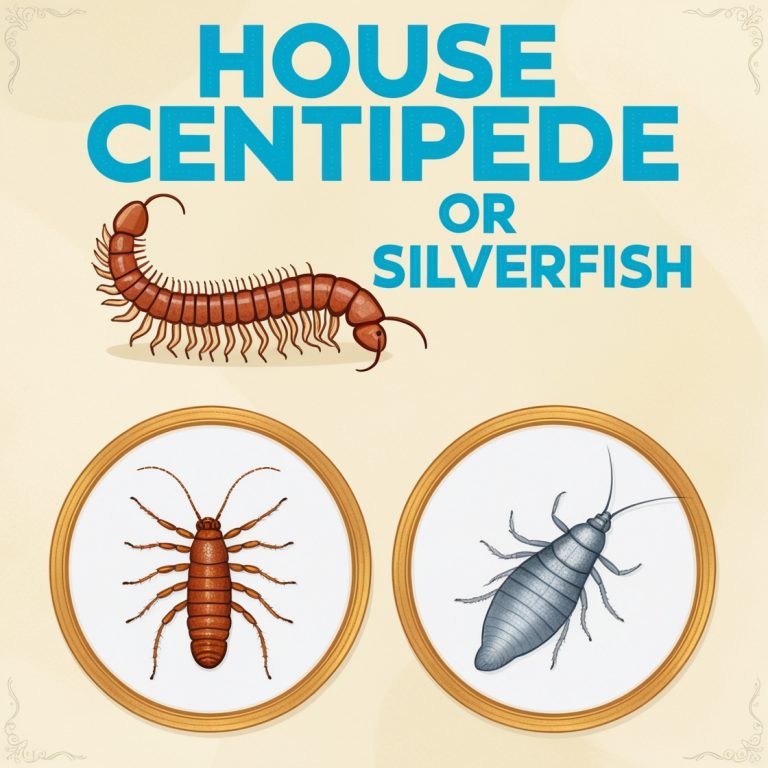How to Get Rid of Silverfish in the Bathroom: Effective Pest Control

Discover effective ways to get rid of silverfish in the bathroom. Learn how to prevent a silverfish infestation and keep these pesky bugs at bay!
Understanding Silverfish: Your Bathroom Pest
When you see silverfish in the bathroom, it’s natural to feel concerned. These wiggly insects, often active at night, can quickly turn from a minor inconvenience into a full-blown silverfish infestation. While they’re considered a nuisance pest, silverfish don’t spread disease or pose direct threats to human health, but they can cause significant damage to your belongings.
What Do Silverfish Look Like: Identifying These Wiggly Insects
Silverfish get their name from being silver in colour and their fish-like movement. These peculiar bugs have distinctive bands on both ends of their body, making them easily mistakable for centipedes. Adult silverfish typically reach lengths of 12-19mm, and their metallic appearance makes them stand out against bathroom surfaces. Since silverfish are most active at night, you might only catch glimpses of these critter scurrying away when you turn on the lights.
Where Do Silverfish Live and Why They Choose Your Bathroom
Silverfish love your bathroom because it provides the perfect environment for their survival. Silverfish are attracted to moisture and require high humidity levels (typically 75 to 97 percent relative humidity) to thrive. Your bathroom’s naturally humid environment, combined with various hiding places, makes it an ideal habitat. You’ll often find these pest near sinks and drains, behind the bathtub, or lurking in cracks and crevices.
Understanding How Silverfish Get Into Your Space
Silverfish can also get into homes through various entry points. They may enter through a leaky pipe, basement access, or any crack in your bathroom’s structure. These insects are particularly drawn to areas with high humidity and readily available food sources. Silverfish are attracted to carbohydrate-rich materials, including cellulose found in paper products and starch in various bathroom items.
Signs of a Silverfish Infestation
How to Find Silverfish (They’re Most Active at Night)
To find silverfish, inspect your bathroom during evening hours when these insects are most active. Common areas where silverfish gather include:
- Around the sink and drain areas
- Behind and under the bathtub
- Beneath loose wallpaper
- Within cracks or crevices
- Near damaged or damp basement walls
- Around plumbing fixtures
Identifying a Silverfish Problem
Silverfish feed on various materials, making damage patterns a key identifier of their presence. Silverfish eat items containing starch and cellulose, including:
- Paper products
- Cardboard
- Book bindings
- Wallpaper adhesive
- Dead insects
- Fabric items
Effective Methods to Get Rid of Silverfish
Natural Methods for Silverfish Control
To control silverfish using natural methods:
- Put small bread pieces in affected areas and leave it throughout the night to attract and trap them
- Moisten the newspaper and leave it for 24 hours as a trap
- Use sticky traps in corners and along walls
- Utilize diatomaceous earth in dry areas
- Regular cleaning and maintenance of bathroom spaces
Professional Pest Control Solutions
A comprehensive pest control plan should include:
- Application of pyrethrin liquid and spray in targeted areas
- Strategic placement of insecticide in hiding places
- Treatment of potential food sources
- Regular monitoring and follow-up treatments
- Preventive barrier treatments
Targeting Silverfish in the Bathroom Specifically
To address silverfish in your bathroom effectively:
- Fix any leaky plumbing promptly
- Seal all cracks and crevices where bugs hide
- Use a dehumidifier to maintain optimal humidity levels
- Ensure proper ventilation
- Clean and dry bathroom surfaces regularly
- Address water damage immediately
Prevention is Key: Keep Them Away
Smart Ways to Prevent Future Infestations
The best way to keep silverfish away is through consistent preventive measures. Although they may be difficult to eliminate entirely, you can prevent silverfish infestations by:
- Maintaining optimal humidity levels with proper ventilation
- Eliminating potential food sources
- Regular inspection of bathroom areas
- Sealing entry points
- Keeping bathroom areas clean and dry
Long-term Solutions for Pest Control
For effective long-term silverfish control:
- Use natural methods where possible to avoid chemical dependency
- Install and maintain proper ventilation systems
- Conduct regular inspections of potential entry points
- Address moisture issues promptly
- Store bathroom items in sealed containers
- Regular cleaning and maintenance routines
When to Seek Professional Help
Consider professional pest control services if:
- You see silverfish regularly despite prevention efforts
- There are signs of a large infestation
- DIY methods haven’t been effective
- You need help identifying entry points
- You require a customized treatment plan
Remember, while silverfish don’t pose direct health risks, they can damage personal property and their presence indicates potential moisture issues in your home. The key to effective pest control is combining immediate treatment with long-term preventive measures.
By understanding silverfish behavior and implementing these control methods, you can successfully manage and prevent silverfish problems in your bathroom. Regular monitoring, maintenance, and prompt attention to moisture issues will help ensure these persistent pests don’t become a recurring problem in your home.
Tips for Ongoing Prevention:
- Monitor humidity levels regularly
- Check for new cracks or openings periodically
- Keep bathroom items elevated and away from walls
- Use moisture-resistant storage solutions
- Maintain proper ventilation during and after showers
- Address any water damage immediately
- Consider professional inspections annually
By following these comprehensive guidelines and maintaining vigilance, you can successfully keep your bathroom free from silverfish while ensuring a healthy, pest-free environment for your home.






